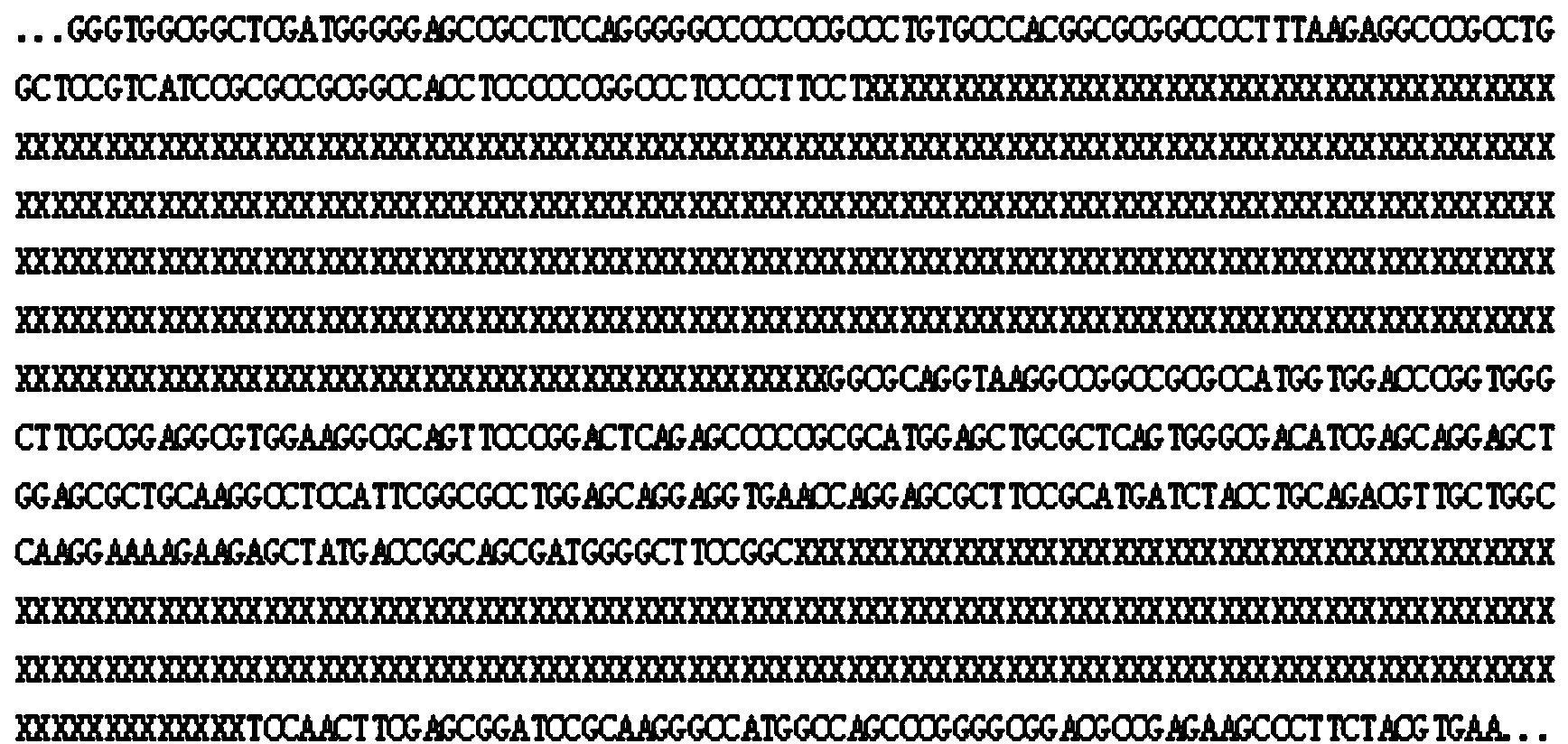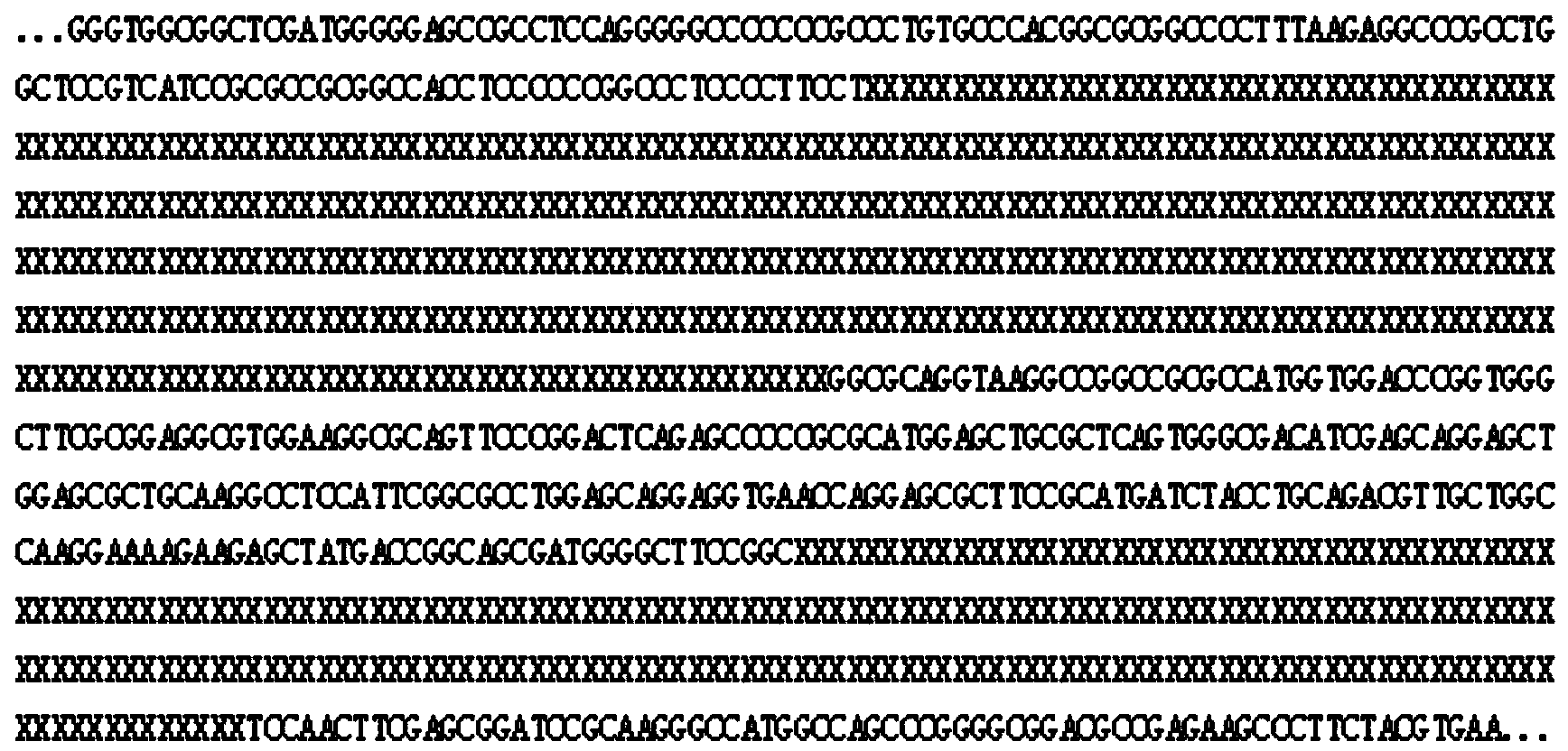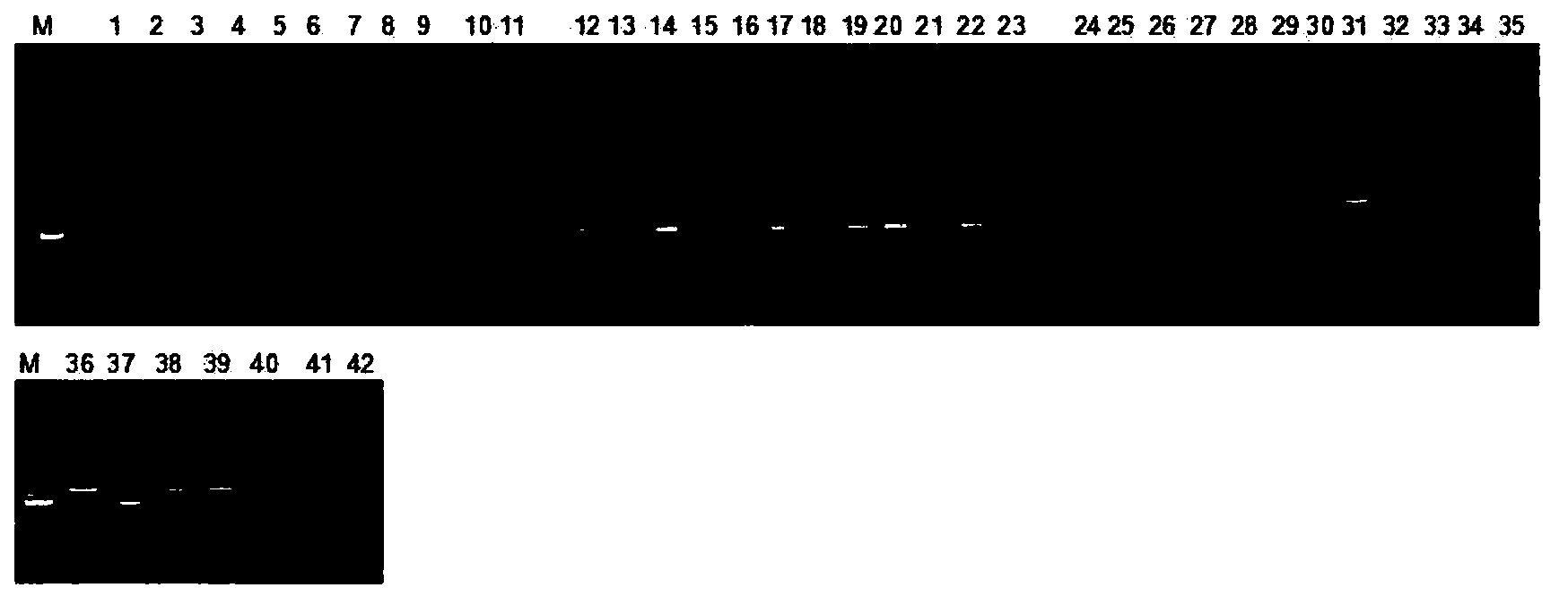FISH (fluorescence in situ hybridization) probe, kit and detection method for detecting BCR/ABL fusion gene free from repetitive sequence
A technology of fusing genes and repeating sequences, applied in the field of FISH probes, can solve the problems of reducing the specificity and sensitivity of FISH detection
- Summary
- Abstract
- Description
- Claims
- Application Information
AI Technical Summary
Problems solved by technology
Method used
Image
Examples
Embodiment 1
[0116] Synthesis of primer sets: through the online analysis database Repeat Masking ( http: / / www.girinst.org / ) analyze the BCR gene and the ABL gene, and obtain the repeated and non-repeated sequences of the BCR gene and the ABL gene (such as figure 1 , figure 2 shown), import the non-repeated sequence into the primer design software Primer5 for primer design, design the amplified product of the primers to be 350-800bp, and synthesize the following 42 pairs of primers by artificial synthesis, 1-20 pairs of the 42 pairs of primers are BCR gene primer set, 21-42 pairs are ABL gene primer set:
[0117] 1F: 5' TCTCCCTCGCAGAACTCGC 3'
[0118] 1R: 5' CAAACCACTCCCATCCCT 3'
[0119] 2F: 5' GTGCCTGTCAACTTTTCTTCC 3'
[0120] 2R: 5' ATCTGCCCACTCTGTCTCC 3'
[0121] 3F: 5' AGCAATCAGCACATTCATAGACC 3'
[0122] 3R: 5' AGAACCTGCACAACAGACCAC 3'
[0123] 4F: 5' AAGCAACCTACAGGCAACA 3'
[0124] 4R: 5' TGAGCCCTCCCACCTAAAA 3'
[0125] 5F: 5'AGTTCCTGCTTGGCTTTCA 3'
[0126] 5R: 5'TTCAGCT...
Embodiment 2
[0203] BCR gene BAC clone construction, the steps are as follows:
[0204] ① Genomic DNA preparation: DNA in chronic myelogenous leukemia tissue was extracted using a commercially available DNA extraction kit;
[0205] ② Enzymatic digestion of genomic DNA: select restriction endonuclease HindⅢ to digest genomic DNA, and perform DNA electrophoresis on the digested products. After electrophoresis, select and recover DNA fragments of 200-300kb fragments;
[0206] ③ Ligation of large fragment DNA and BAC clone: use commercially available pIndigoBAC-5 as the carrier, and construct the connection system according to the mass ratio of vector to large fragment DNA at a ratio of 1:10;
[0207]
[0208] Ligation at 16°C for 16 hours; treatment at 65°C for 20 minutes to inactivate T4 ligase; the ligation product was dialyzed with 0.025um Millipore membrane for 3 hours, the dialyzed ligation product was divided into 0.5ml centrifuge tubes, transformed into DH10B cells and cultured s...
Embodiment 3
[0211] ABL gene BAC clone construction, the specific operation steps are roughly the same as in Example 3, the difference lies in step (4) screening of ABL gene BAC clone: primers are designed for the ABL gene, and the ABL clone constructed above is screened by PCR method. The fragments with PCR products were recovered, sequenced and analyzed after being transferred into the T vector, and the ABL gene sequence was compared, and those that matched the ABL gene were BAC clones containing the ABL gene.
PUM
 Login to View More
Login to View More Abstract
Description
Claims
Application Information
 Login to View More
Login to View More - R&D
- Intellectual Property
- Life Sciences
- Materials
- Tech Scout
- Unparalleled Data Quality
- Higher Quality Content
- 60% Fewer Hallucinations
Browse by: Latest US Patents, China's latest patents, Technical Efficacy Thesaurus, Application Domain, Technology Topic, Popular Technical Reports.
© 2025 PatSnap. All rights reserved.Legal|Privacy policy|Modern Slavery Act Transparency Statement|Sitemap|About US| Contact US: help@patsnap.com



